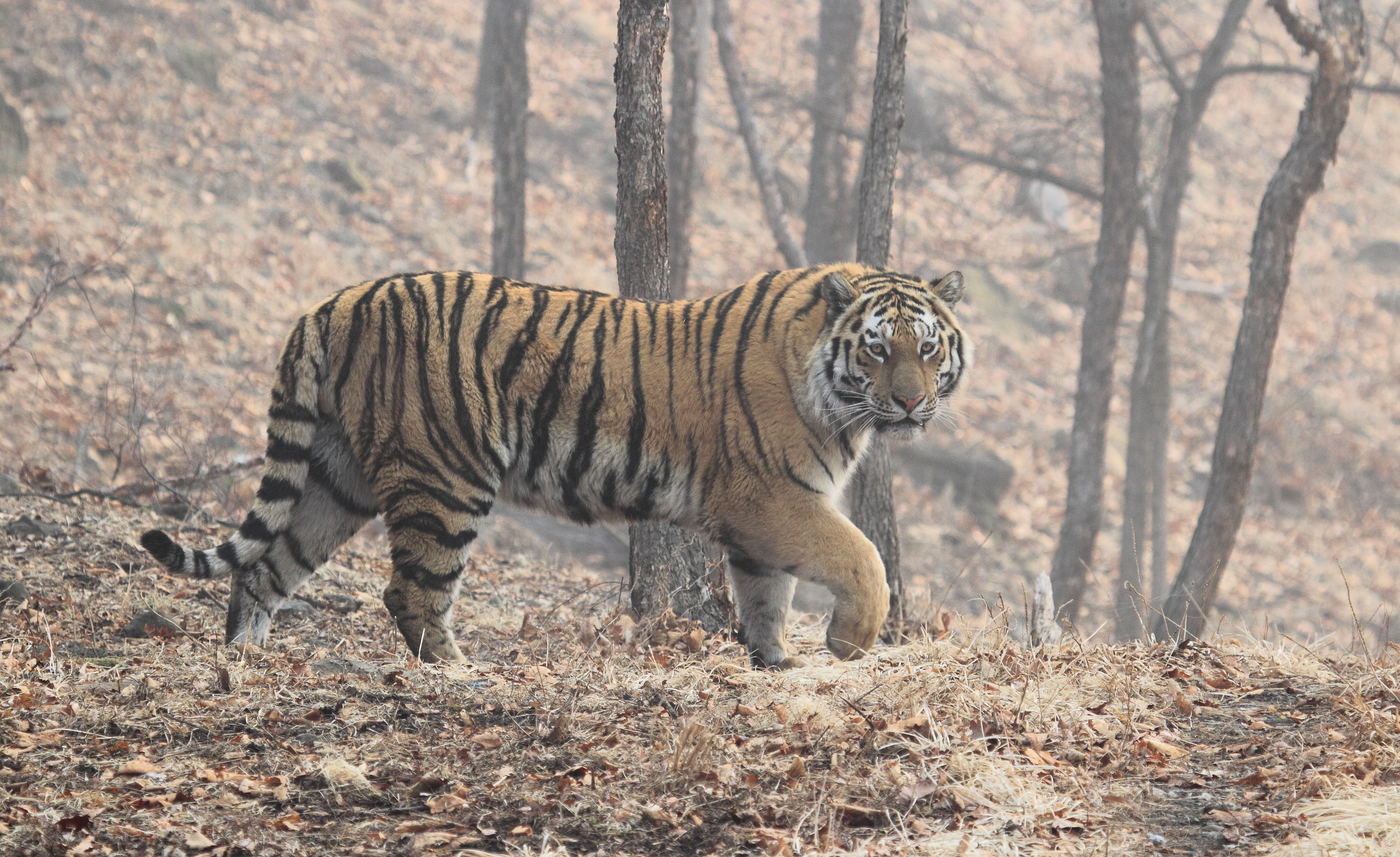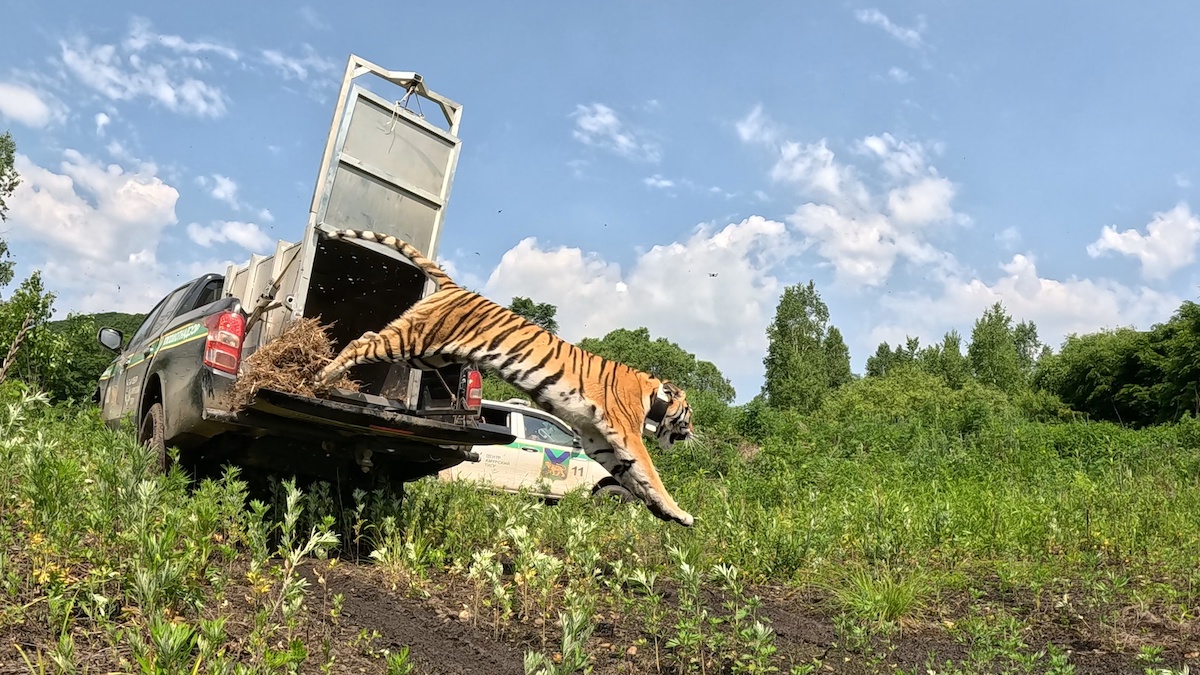The predators are complete opposites of each other. They have different age, character and physiological condition at the moment of their admission to the rehabilitation center. They are united only by the region of their capture - Khabarovsk territory. However, the factor of compatriotism became decisive, and the predators in the rehabilitation center gnawed through the fence separating them and became "friends".
ABOUT THE TIGRESSES
The adult female predator was captured on March 2 in the vicinity of Arsenyevo village, Nanaysky District. The examination showed the predator to be in an emaciated state; she had a long-standing injury - on one of her front paws three claw phalanges were missing. She had most likely fallen into a trap and because of that she could not hunt normally for some time until the wound healed. This was the cause of her conflicting behavior. Also the tip of her tail was frostbitten and had to be cut off.
The young tigress was taken from the wild on April 3. A few weeks before she managed to run over a steer, injured a cow and dragged several dogs in the village of Zolotoy in the Lazo district. Examination did not show any injuries and the animal was not emaciated. She was left to wait until spring under the supervision of specialists, who checked how she reacts to humans and how she hunts.
"The young tigress' behavior is explained by her age. Separated from her mother, the tiger cub in her second year of life was looking for her territory and, unfortunately, ended up in the vicinity of a settlement with insufficient numbers of ungulates nearby," said Sergei Aramilev, director general of the Amur Tiger Center. - The Khabarovsk Krai Hunting Inspectorate acted promptly and removed the predator from an unfriendly environment, thus protecting both inhabitants of the settlement and the tigress.
Both animals were caught by the employees of the Department of Game Management of Khabarovsk Krai Government and Khabarovsk Krai Wildlife Protection Service with support of the Amur Tiger Center. The tigresses were taken to the rehabilitation center near the village of Alekseevka in Primorsky Krai, where they were kept in the neighboring enclosures.
AT THE REHABILITATION CENTER
Each of the tigresses noticed that there was a neighbor. At first they behaved carefully, looking at each other from a distance, through the net. The young carnivore behaved more cautiously, and the adult one was a bit bolder. The staring game went on for about a week.
One morning, on entering the room where the camera signal came in, the expert noticed that one of the cages was empty, but the other had two tigresses at once! It appeared that the tigresses had chewed through the interwall netting (it was thinner and had a single layer, in contrast to the external perimeter) and began to live together. Somewhat later, the predators tried the same trick to enlarge their "living area" and chewed through a hole into the third enclosure.
All the time the tigresses were together they behaved peacefully, one could even say friendly, so it was decided not to separate them until the moment of their release into the wild.
RETURN TO THE TAIGA
Both predators successfully passed all the tests that the experts had prepared for them, and proved their readiness to return to the wild. The main problem that arose during the preparation for the release was that the two tigresses had to be separated in order to make the final veterinary check-up, to put on the satellite collar and to be driven to the place of release. This operation took about a week.
Both of them were released in the Primorsky Krai. Why didn't the tigers from Khabarovsk territory return to their home region? First of all, the reason is that the total population of tigers, though increasing, is relatively small, and such exchange will help increase the genetic diversity of the population and positively influence its sustainability.
The first one to go out in the wild was the adult tiger. It was released into the wild in central Primorye near one of the federal protected areas that is rich in ungulates but far from human settlements.
Adult tigress release
The young predator returned to the taiga two days later in the northwest of the region.
Young tigress release. Video by Oleg Kabalik
"For the first time in the history of the Amur tiger rehabilitation program, a young tiger was released in the Pogranichny district. Tiger numbers here have fluctuated all the time: in 2004/2005 it was, by 2014/2015 it had disappeared, and already in 2022, records showed that the tiger had returned. According to the latest data there are 3 males and 2 females. A young tiger from the Khabarovsk region is expected to strengthen and increase this group," adds Sergei Aramilev. - Besides, under the agreements with the People's Republic of China, Russia undertook to create an ecological corridor, which was created in the Komissarovsky reserve. Tigers travel along this corridor from Russia to China and back, thus feeding the regenerating group of tigers in the Celestial Empire.
The release into the wild was conducted by employees of the Department of Wildlife Protection and Protected Areas, KGBU Directorate of Wildlife Protection and Protected Areas of Primorsky Krai, Rosprirodnadzor and the TRNCO "Tiger Center" with the participation and support of the Amur Tiger Center.

